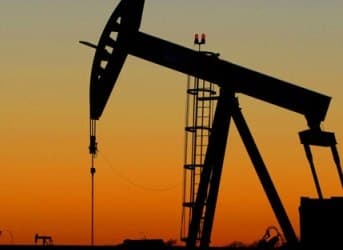Beneath the ancient groves of Italy’s Basilicata region lies something more valuable to modern Italy than olives—oil. The region represents the “instep” of Italy’s iconic boot and contains the largest inland oil reserves in Western Europe. Possessing over 1.4 billion barrels of crude, Italy stands as the third-largest European holder of oil reserves behind Norway and the United Kingdom yet pumps a relatively small volume of oil. Developing the untapped riches of the Basilicata region is the key to changing that.
In 2012, the Italian government rolled out its national energy strategy, which called for large increases in domestic production of oil and natural gas. Italy produces less than eight per cent of its total oil consumption and its refineries source the majority of their crude from North Africa, a region that has been markedly unpredictable as of late. Boosting domestic production would relieve this unpredictability and help reduce Italy’s onerous energy trade deficit, which amounts to over €60 annually.
The Basilicata region is already home to Italy’s largest operating field, Val d'Agri, which currently produces 85,000 barrels per day and is jointly operated by Eni, Italy’s national oil company, and Shell. These oil majors have obtained permits to increase production to 104,000 and are attempting to further raise that cap to 129,000. The next field to be developed is Tempa Rossa. Expected to hold up to 440 million barrels of crude, Tempa Rossa is the largest undeveloped oil field in Western Europe. Total, Shell, and Mitsui, a Japanese trading firm, are planning to invest €1.6 billion to achieve 50,000 barrels per day of production by 2016. In all, the region has the potential to more than double Italy’s production in the coming years, creating more than 25,000 new jobs and €3 billion in tax revenue yearly, according to the government.
Related article: European Energy Security and the Quiet Close to the Pipeline Opera
Since highlighting the region for potential oil exploitation, however, local municipalities and environmental groups have pushed to block development. In 2012, the Basilicata region introduced a ban on all new hydrocarbon permits until it was overturned by Italy’s constitutional court the following summer. These same actors slowed the original development of Val d'Agri in the 1990s, forcing Eni to spend the better part of a decade in negotiations before production could begin. However, Rome is in a more precarious position now than it was in the 1990s.
Italy is in desperate need of new jobs and new sources of government revenue. National unemployment stands at 12.7 per cent and unemployment in the Basilicata region is even higher at 14.5 per cent. In an attempt to soften local resistance, Rome has encouraged more generous revenue sharing packages in order to quicken the pace of development. The development of the Val d’Agri field was already a windfall for local governments, which received almost €500 million in royalties between 2008 and 2012.
The coming months will reveal how much power remains in the hands of small Italian towns in the face of nation-wide economic hardship. Italy has a chance to both increase local employment and ease national financial strain by expanding oil production in the region. One thing is sure: crude oil will be much more effective than olive oil in righting Rome’s fiscal ship.
By. Rory Johnston



















1.4 billion barrels is less than a month's worth of crude consumption.
Where is the return from it?
Look to the United Kingdom. It has obediently burned through its reserves and is now bankrupt, pretending that this is not so while begging for loans so as to buy and waste Russian, Algerian and Nigerian crude.